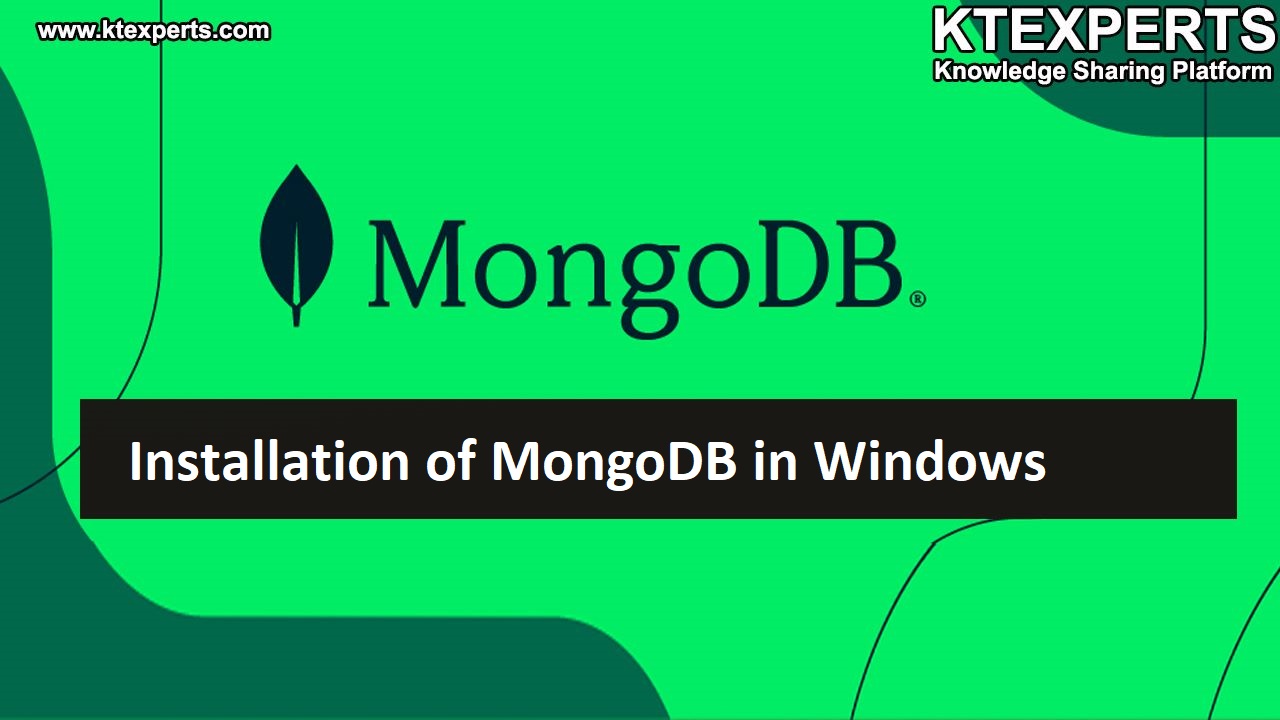Introduction to MongoDB
MongoDB is an open and free NoSQL database management system. It is a document oriented database, i.e. it will store all the data in semi-structured Binary JSON like documents.
Features of MongoDB
Document Object Data Model: MongoDB stores the data as Binary JSON documents, with this you can store the data in a minimal number of documents and not by breaking it into multiple relations like relational databases. This allows for the flexible and dynamic schemas.
Built in Aggregation Tools:This allows you to perform analysis on complex data. These tools provide a way to group, filter and transform data. It is similar to GROUP BY clause in SQL.
Horizontal Scalability: This is the process of increasing the capacity of a MongoDB deployment by adding more servers to it, rather than updating the existing server. In this way, we can store large amounts of data and handle more requests by distributing the load across the multiple servers. By this, we can increase the number of requests that can be handled simultaneously.
Replication and High Availability: High availability is the ability of a database deployment to continue providing access to data and operating on data even in the case of server failure or any other system disruptions.
By this, if one server goes down, you can get the data from the other server.
Replication is the way of maintaining multiple copies of data across multiple servers. This provides data redundancy, with this data availability will be increased.
Flexible and Dynamic Schema:The document-oriented data model allows flexible and dynamic schemas, which make it easy for developers to add or remove fields.
Secondary Indexing: It is a data structure that allows for faster query performance by indexing the required fields within a collection.
These are used to improve the performance of read operations. MongoDB supports different types of secondary indexes, i.e. single field index and compound field index. This allows MongoDB to quickly locate the relevant document, which is based on the secondary index.
Terminology in MongoDB
Database: It is a physical container for the collections.
Collections: A collection is a group of documents stored together that have a similar structure. It is similar to a table in RDBMS.
Each document in a collection can have a different structure and can contain different fields, but they must have a similar structure.
Document: It is similar to a row in RDBMS. Each document in a collection can have a different structure, because there are no schema requirements for the MongoDB database. The documents are stored in collections i.e. tables in RDBMS.
Languages supported by MongoDB:
MongoDB provides official driver support for all popular programming languages like c++, java, Python, Perl, Ruby, Scala, Go, Rust, Node.js etc.
Table for terminologies in MongoDB VS RDBMS
| MongoDB | RDBMS |
| Collection | Table |
| Document | Tuple/Row |
| Field | column |
| Embedded Documents | Joins |
| Primary key(provide a default id if not provide it is a 12 byte hexadecimal number) | Primary key |
Pros of MongoDB over RDBMS
1. Flexible and Dynamic schema
2. No complex joins
3. Distributed data
4. Large volume of data
5. Cloud native
Cons of MongoDB over RDBMS
1. Limited Query functionality
2. No support for joins
3. Limited support for complex Fractionation s
RDBMS VS MongoDB
MongoDB is fast as compared to RDBMS because of indexing and efficient storage techniques.
MongoDB allows users a highly flexible and scalable document structure.
Complex transactions are not supported in MongoDB because complex join operations are not available.
MongoDB doesn’t need any schema, whereas RDBMS must have a schema which specifies the number of tables and relation in between them.
SQL VS NoSQL
| SQL | NOSQL |
| These databases are not suited for hierarchical data storage. | These databases are best suited for hierarchical data storage. |
| These databases have fixed or static or predefined schema | They have dynamic schema |
| Vertically Scalable | Horizontally scalable |
| These databases are best suited for complex queries | These databases are not so good for complex queries |
| Follows ACID property | Follows CAP (consistency, availability, partition tolerance) |
| Examples:MySQL, PostgreSQL, Oracle, MS-SQL Server, etc | Examples:MongoDB, GraphQL, Cassandra, etc |
Applications Of MongoDB
1. Social Media
2. Real time Analysis
3. Mobile and web Applications
4. Content management system
5. Gaming
| Author : Teja |
LinkedIn : https://www.linkedin.com/in/teja-sai-nadh-reddy-tatireddy-048882201
Thank you for giving your valuable time to read the above information. Please click here to subscribe for further updates
KTExperts is always active on social media platforms.
Facebook : https://www.facebook.com/ktexperts/
LinkedIn : https://www.linkedin.com/company/ktexperts/
Twitter : https://twitter.com/ktexpertsadmin
YouTube : https://www.youtube.com/c/ktexperts
Instagram : https://www.instagram.com/knowledgesharingplatform


